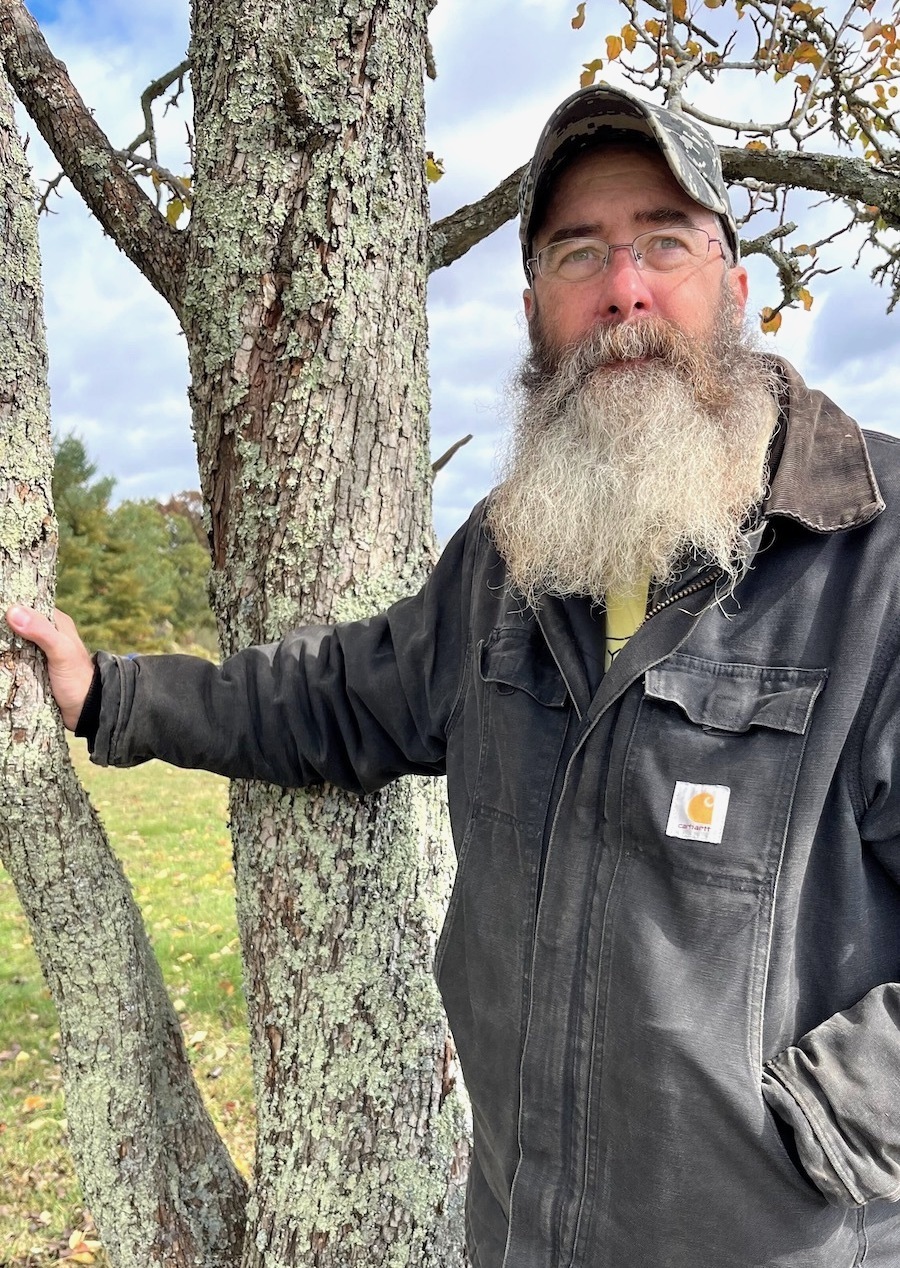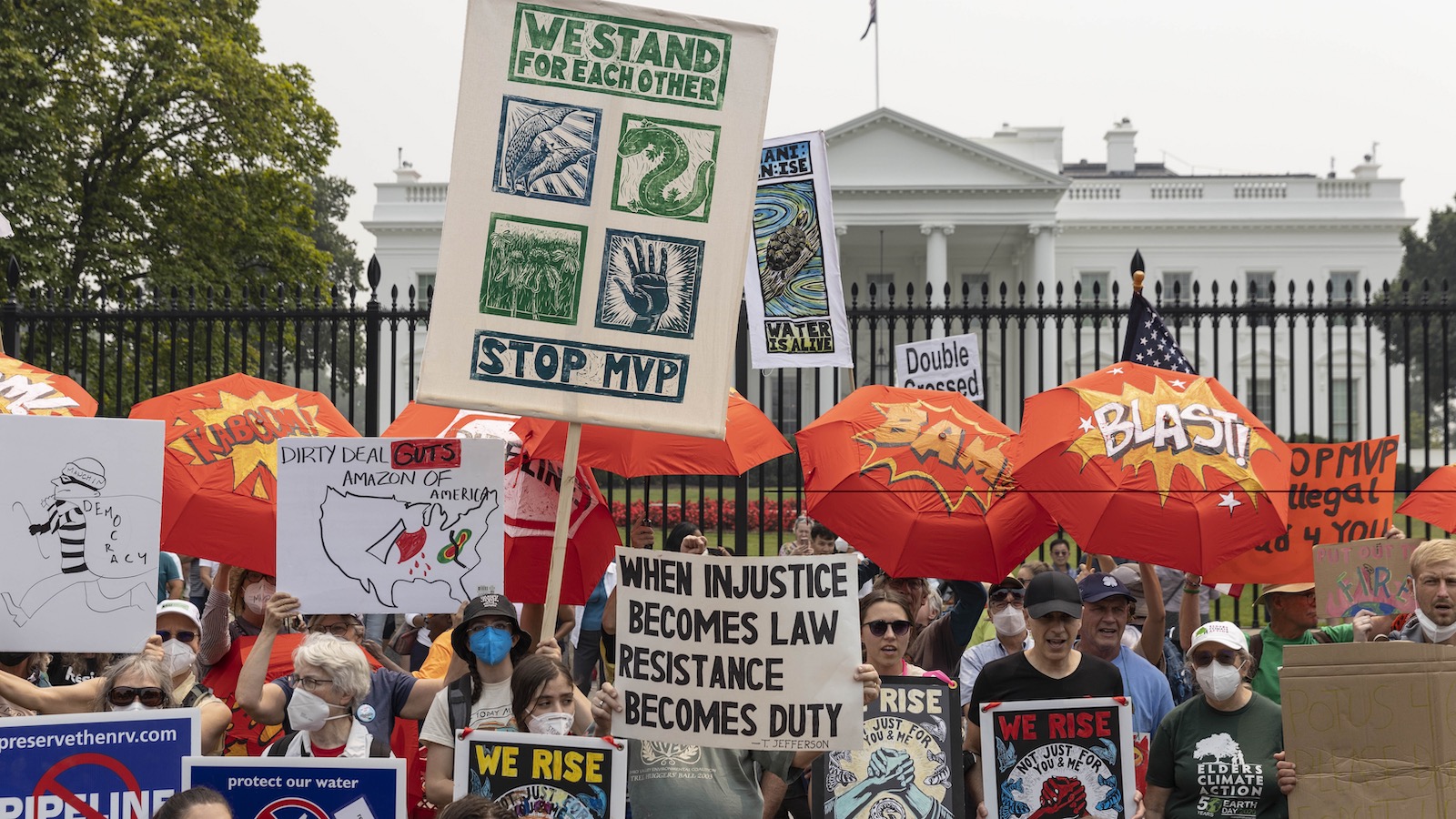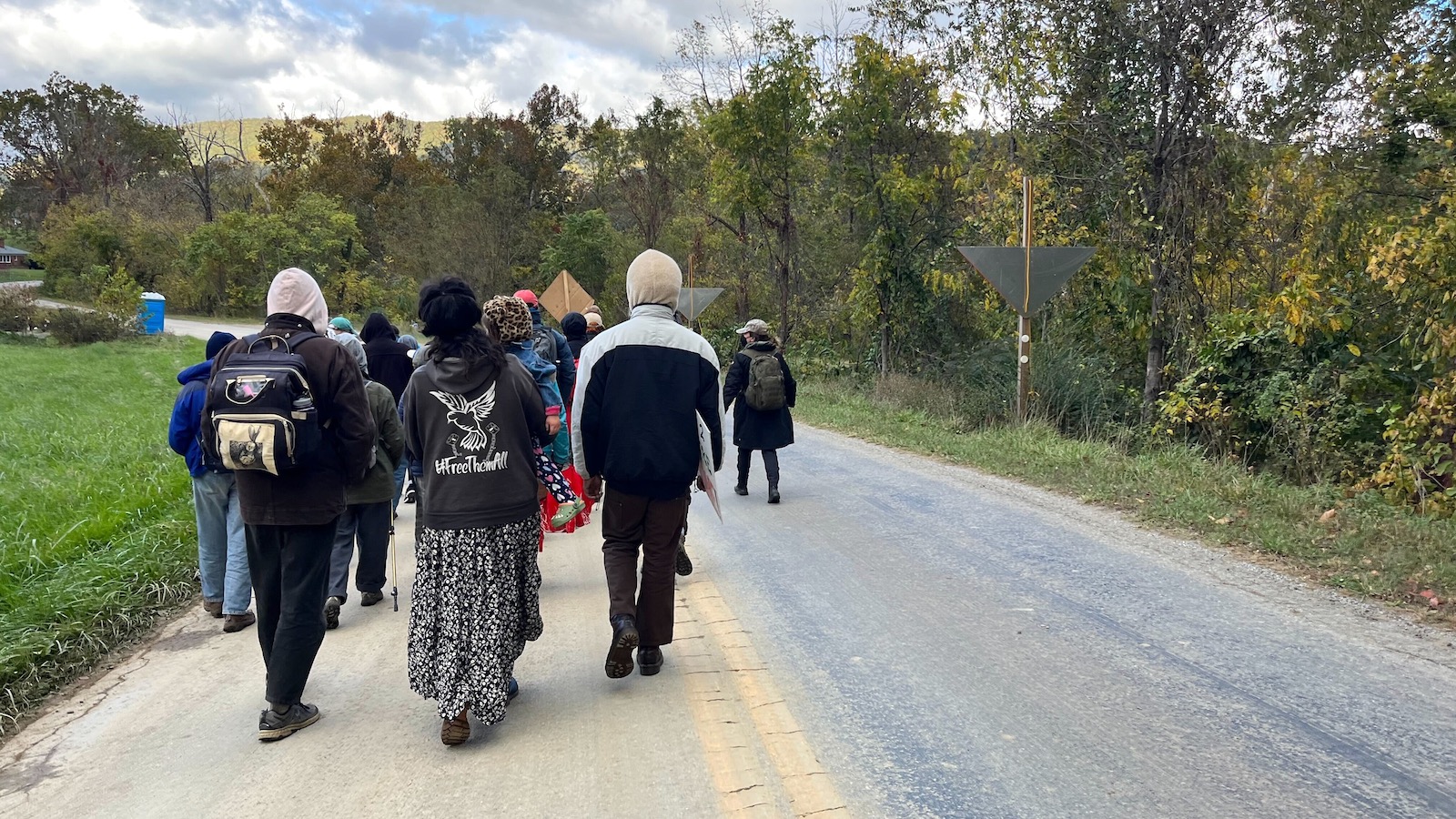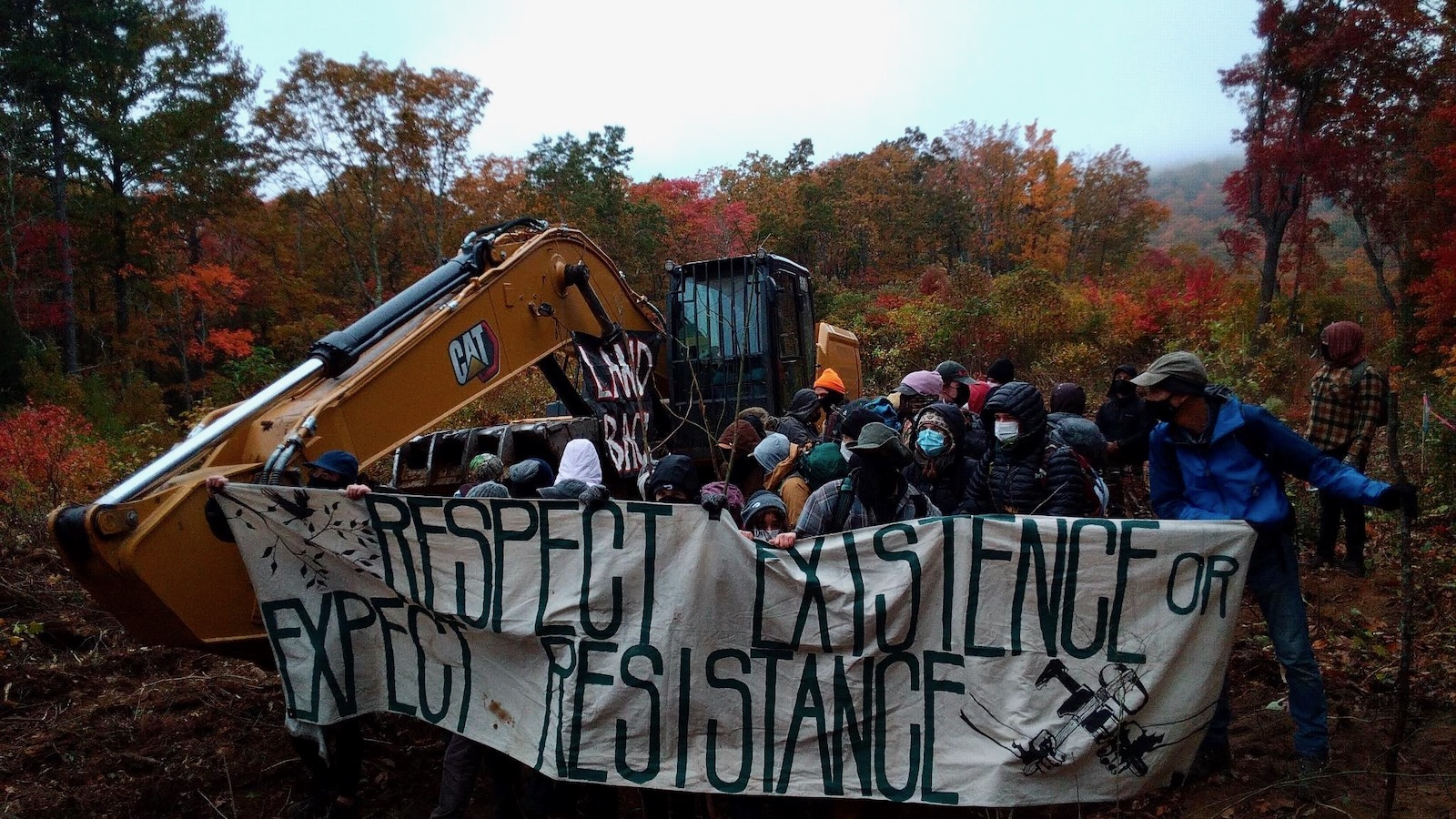An art show at an Augusta County school prompts an emergency school board meeting

In the spring of 2023, the theater departments at Lynchburg’s two public high schools joined together to produce the popular, but often controversial, musical “The Prom,” which is loosely based on the true story of a gay couple banned from attending their high school prom.
Lynchburg City Council member Marty Misjuns blasted the choice: “It’s absolutely appalling to me that the publicly funded Lynchburg City Schools would put on a production with children that openly mocks the vast Judeo-Christian majority in our city … Lynchburg City Schools should immediately cancel the rest of these productions out of respect for those that believe in, prescribe to, and practice the Christian faith.”
The show went on — and became the best-attended show at Heritage High School in the post-COVID era.
There may be several lessons from that episode, but one of them is surely this: Schools have become battlegrounds for conflicting cultural values, and anything dealing with LGBTQ+ issues is especially controversial. It’s probably no accident that many of the books that get pulled from school library shelves have LGBTQ+ themes or characters. Throw in a dash of religion — as “The Prom” did — and the mix becomes even more explosive.
One detail that was often overlooked at the time: It was students, not teachers, who picked the show. Some seniors had been pushing for it since they were freshmen, but the performance rights weren’t available then. The fact did nothing to lessen the objections to the show from those who found it offensive, but it does help illustrate the complexities of our diverse society: Even in a conservative Southern city best-known for its high-profile religious university, there are teenagers who identify with the characters in “The Prom” and adults who support them. And I’m sure in more liberal communities, there is a minority of conservatives who feel out of step with the prevailing culture around them.
This is why governing our society is so hard.
The latest example of this came early this month in Augusta County, where the school board went into an emergency closed session on a Saturday night to discuss what to do about a student’s piece of artwork that was set to be displayed the next afternoon at a high school art show.
The board wound up not doing anything, at least not right now. When it came out of closed session, board chair David Shifflett said the school system may look into creating new rules for student art shows in the future.
The student whose artwork set all this in motion is Abby Driscoll, a 17-year-old senior at Fort Defiance High School. She’s gay. She’s also a talented artist who hopes someday to own her own photography business. For the spring art show, she chose a series of works to exhibit.
There was one piece she wondered whether to include, because it included Bible verses. Specifically, it showed a pair of hands, clasped in prayer and holding rosary beads, with Bible verses in the background and these words in the foreground: “God Loves You But Not Enough To Save You.” In a statement on the art website Artsonia, Abby says: “This piece is representative of the idea that growing up queer meant you couldn’t be saved by God. I grew up in a religious background and that influenced this project. The idea of the glowing red cross is to represent evil in the eyes of God and the bleeding rainbow represents devotion vs identity. Overall the piece gets across the message I want it to, even if it is a little in your face. I wish I had made the rosary more detailed but I’m glad I spent most of my time in the hands and drips. I think this was a successful piece and states what I want it to.”
She asked friends whether they thought the piece was too strong to include in the art show. They told her there might be some complaints but not to worry.
They were wrong.
The artwork went up after school on a Friday afternoon.
“By nighttime I had heard people disagreeing with it,” Abby told me. “A lot of things were going up on social media. It was mostly students Friday night.”
From the comments she saw, “there was a lot of backlash from students, a lot of students saying it was disrespectful and shouldn’t be allowed in school — but also a lot of support. … It wasn’t until Saturday night that I made it to Facebook and I saw adults commenting on it.”
On that Saturday afternoon at 4:28 p.m., one Augusta County School Board member, Timothy Simmons, posted this on Facebook:
Several people have reached out to me regarding the art show on Sunday at Fort Defiance High School and a specific piece of art that is slated to be in the show. This particular piece of art is seen as offensive to some, including myself. The School Board has called a special meeting tonight at 9:00 pm to discuss. The meeting will be held in closed session, however any vote on the matter will take place publicly.
This is a sensitive topic with various dynamics at play and I will do my best to handle it as such.
The School Board is working with our legal counsel and I am currently reviewing the Supreme Court rulings relevant to this situation.
I will also be asking for a review on the process for approving pieces that are included in the art shows. Is there a process in place and, if so, how do we honor students’ free speech while also creating a culture of respect within our schools.
It’s since generated 572 comments, from all sides. Here’s a sampling:
- This art doesn’t belong in a high school.
- As someone who believes in God, I see nothing offensive or wrong about this artwork. The message is sincere, raw, and authentic. It’s powerful and this kid has every right to share it. Christians need to stop bullying everyone that doesn’t agree with them. Respect the youth and their right to use their voice!
- Would you say the same thing if a student created an art piece attacking gays? This piece is hate speech as it attacks Christianity. Can’t have it both ways.
- She’s just a kid expressing her trauma. Her trauma brought by adults. And this board is just perpetuating the trauma.
- This artwork is an attack on Christianity, it is hate speech.
- It seems to me that instead of trying to remove the student’s art you ask yourself what pain led them to create this instead of clutching your pearls claiming religious persecution.
“There was a lot going up on social media,” Abby said. “It was discussed on Snapchat, Instagram, I saw it on pretty much all social media platforms.”
The school board never contacted her or her family. The board meeting was held in closed session and resulted in no action. That Saturday at 11:11 p.m. Simmons, the school board member, posted on Facebook:
The Board met and agreed to work on a policy that will address issues like this going forward. As I mentioned previously, it is important that our students have freedom of speech but also that we maintain a culture of respect within our schools. This is a delicate balancing act but the Board is committed to finding a solution. For now, the art work in question will be removed by the time students arrive back at school on Monday as the art show ends on Sunday.
That post has since generated 503 comments, mostly in the vein of the comments above.
The next day, the art show went on as planned, although “we had a few cops show up, they were just standing around making sure nobody was going to cause anything,” Abby said.
There were no problems.
By day’s end, the art show was down, as planned, but then came a round of media attention. Abby said she was inundated with messages of support as the stories circulated. “Oh geez, directly probably like 30. I had a lot of people reach out to me.” The Wisconsin-based Freedom From Religion Foundation contacted Abby and invited her to apply for a $1,500 scholarship. “There’s a lot more community supporting me than I thought,” Abby said. “The hate is lot more loud but there’s a lot more support than you think.”
Neither the Augusta school board chair nor the member who posted about the artwork responded to my inquiries, so I don’t know how they feel about all this now. I also contacted some of the larger school systems in the western part of Virginia to see if they’ve ever had an art show controversy. They have not.
Nationally, though, controversies arising out of student art shows are not unheard of. At the same time that Augusta County was dealing with artwork that some considered offensive to Christianity (and others, plainly, did not), a school system in New York was dealing with a piece of student artwork that was deemed racist for the way it depicted basketball star LeBron James with a comparison to a monkey. In that case, the superintendent issued a statement — “Superintendent addresses racist artwork at art show,” the school system’s website says — and said there was an investigation.
Just a few weeks earlier, two students in Phoenix said a school had banned their entries in a school art show because they depicted or suggested nudity. Both students were girls. “I think it also sends a message that women should be ashamed of their bodies,” one of them told a Phoenix TV station. “That is a horrible message to send to young girls.”
Last year, Inside Higher Education devoted an article to the challenges that colleges face when displaying art. Among the examples it cited: In 2019, what was then Mary Baldwin College (now Mary Baldwin University) removed artwork that depicted Confederate figures because some students found it offensive — “thinly veiled microaggressions,” one student called it. Others said it “verged on hate speech.” The irony is that the Richmond-based artists said they intended their work as a way to reimagine the spaces in Richmond where Confederate monuments had been removed. But that’s not how some viewers took it.
You’ll notice in these examples that some involve those on the right, other times those on the left. Here some said the art in question was offensive to Christians; at Hamline University in Minnesota some Muslim students said that artwork displayed in an art history class was offensive to their faith (and the instructor’s contract wasn’t renewed). Art is sometimes an equal-opportunity offender.
Through the centuries, artwork has often been controversial — even the great Michaelangelo ran afoul of church authorities because he included nude figures in one of his frescoes in the Sistine Chapel. (After his death, the offending parts were painted over.) The artist known as Balthus — his full name was Balthasar Klossowski de Rola — has some works that are so disturbing that one particularly controversial piece hasn’t been shown in public since 1977.
Perhaps, then, we shouldn’t be surprised that some student artwork also becomes controversial, and that what is offensive to some is artistic to others. Abby told me she’s gotten lots of requests for prints of her piece, and even one person who offered to buy the original. She’s not sure she wants to part with the original, but prints are available through Artsonia, a site of student artwork where 20% of the sales goes to the art program at each student’s school. The piece “But Not Enough To Save You” has generated 138 comments — all since the controversy first became public, and all in her favor.

In this week’s West of the Capital:
I write a free weekly political newsletter, West of the Capital, that goes out every Friday afternoon at 3 p.m. You can sign up here:
This week I’ll look at:
* The latest early voting trends in congressional primaries across the state.
* How Staunton almost became the state capital — twice.
* A reminder about the true purpose of Memorial Day.
The post An art show at an Augusta County school prompts an emergency school board meeting appeared first on Cardinal News.




































